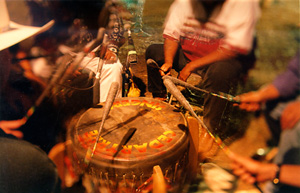
Native
American
Music

Click to tell me what music I should review
There are hundreds of recordings by Native American singers but
the majority are Powwow songs or traditional songs or chants in a Native tongue. Nothing wrong
with those but having been brought up with Western folk music, sixties protest and continuing
folk-rock I was interested in trying to find music that either dealt with Native American
issues or was influenced by Native American traditions in a familiar style. A sort of
crossover that took the best of the white and Native American cultures. Such albums are not
easy to find and that is why I want to share my discoveries here. The following are all superb
albums and I would urge you to take the decision to add these to your collection.
Brulé
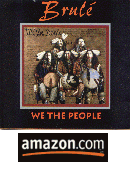
Brulé is the performing name of Paul Laroche, a Native American born on the Lower Brulé Lakota Reservation in South Dakota but adopted at birth by a white couple. Paul new nothing of his heritage until the death of his adoptive parents in 1993 when he discovered his true heritage. Although his upbringing was in a white middle class environment which naturally affected his musical influences, it is remarkable how much of his Lakota heritage comes through on this recording.
This is by no means what you might expect of Native American
music, with it's touches of New Age piano and Jean-Michelle Jarre, but the Lakota heritage
underpins it all. Most of the tracks are piano or synthesiser with delicate percussion and
many are supported by underlying Native American chants from singers whose background includes
Dakota, Dineh, Kiowa, Comanche and others. It is modern music, almost rock, but with a
heritage of generations.
Although mostly instrumental there are some tracks
with spoken dialogue all in Native tongues with the exception of the final
track which I think is one of the most moving pieces of music I have heard.
If you have RealPlayer installed and would like to hear this track click
here.
I acknowledge that this is copyrighted but the sole purpose of featuring
this track is to encourage you to buy the CD. Just listen to the words
which, to me, sum up all that has happened to the Native American people
over the past couple of centuries and the spirit that remains in each
person.
If your tastes are modern but you enjoy Native American
influences this is a fine recording, one that often prevents access to my CD-ROM drive as I am
working!
Robbie Robertson
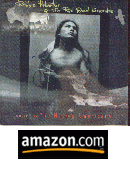
Although of Mohawk descent, Robbie Robertson is not the most obvious artist to come to mind when thinking of Native American music. This album however, composed as the soundtrack for a TV series, not only has a number of great songs about Native American issues, it also has a good deal of direct influence from a number of guest artists.
The opening song is quite atmospheric with vocals in a Native
language (forgive me, I don't know which) and is followed by another in a Native tongue by the
group Pura Fe. Robbie Robertson's first vocal contribution comes in Ghost Dance which tells
'They outlawed the Ghost Dance, but we shall live again'. Other tracks with vocals by Robbie
Robertson include story telling songs such as It is a Good Day to Die and Words of Fire, Deeds
of Blood based on a speech by Chief Joseph. Several tracks are based on Native American legend
such as Skinwalker and Golden Feather.
To my mind the best piece on the album, indeed one of the
finest instrumentals I have heard, is composed and played by Douglas Spotted Eagle with a
beautiful guitar solo by Robbie Robertson. Titled The Vanishing Breed it was inspired by an
Edward Curtis photo showing a group of Native Americans riding away with one turning his head
to look back. The gentle flute and plaintive guitar here, captures the feel perfectly. Other
guests include Rita Coolidge and Priscilla Coolidge who provide backing vocals and contribute
Cherokee Morning Song. This collaboration was to lead to a group of their own as will be seen
later.
The inlay to the CD has full lyrics, lots of quotes from people
such as Chief Plenty Coups and Chief Joseph and several fine photos. This is more an album
about Native American people than by them but it is a fine album and is highly
recommended.
Little Wolf Band
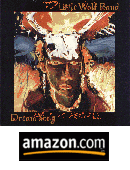
Robbie Robertson's album was produced by Jim Wilson, of Choctaw descent, and he obviously felt that there was room to expand upon much of the material on that album. The result is Little Wolf Band which takes a couple of the tracks from Native Americans and expands and reworks them and adds several more. The result is a stunning atmospheric album unlike anything you have heard before. A sticker on the original CD said 'Native American Ambient Trance Music' and whilst just a marketing ploy it does come close to the overall feel of the album.
Most of the songs are composed by Jim Wilson although there is
one traditional Apache song and the opening track is by Chief Dan George. Two songs, Coyote
Dance and Twisted Hair are reworked from Robbie Robertson's album and Coyote Dance is expanded
into a beautiful chant with underlying percussion that builds and builds to a great climax.
Although over six minutes long it could continue almost forever as more and more layers are
introduced. Play this loud and you'll see what I mean.
Many tracks are instrumental or almost instrumental with chants
rather than vocals, although there are several 'straight' songs such as Eagle Dream with
vocals by Sandy Tonello-Greenfield. Priscilla Coolidge and her daughter Laura Satterfield also
contribute to a number of the songs. Raven is a beautiful slow song with synthesisers,
percussion and chants which reminds me a little of the Douglas Spotted Eagle song mentioned
earlier.
Perhaps my favourite tracks are Buffalo Nation which tells of
the coming of the Buffalo people in a spoken story over heavy percussion and traditional
chants and Twisted Hair which opens with the sound of a burning fire and spoken narrative
@quot;This was the way of it, let the story fires be lighted, let our circle be strong and full of
medicine. Hear me, this is my dream song that I am singing for you ...". A superb story/song
that captures Native American traditions and culture with perfection.
This album is quite different from anything you have heard
before. A brave new attempt to bring Native American music to a wider audience and interpret
it in a different way, and it works perfectly.
Little Wolf
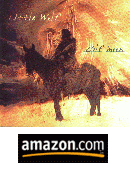
A couple of years on and Jim Wilson decided that a follow up album was due. This one is less of a 'whole' than the original being much more mixed in style. Perhaps that's why he dropped the word 'Band' and made this by Little wolf instead.
There is certainly nothing wrong with this album but to me the
first album was inspired whilst this is more of a job of work, a conscious attempt to produce
another album. Rather than try to repeat the overall 'continuous' feel of the previous album
this brings together a collection of separate songs. The influence of the previous recording
is still present but the range of styles is greater as is evidenced by the opening track
spoken by Willaru Huayta, a spiritual messenger of the Inca people from Peru.
Most of the artists from the previous recording are present
with Rita and Priscilla Coolidge and Laura Satterfield now firmly together as Walela and
contributing two full songs as well as backing vocals. Wolf Moon is a powerful chant style
whilst Song For The People is a beautiful slow song in Cherokee. Their final contribution is a
Christian hymn How Great Thou Art sung in Choctaw which transforms a dull conventional hymn
into a song of rare beauty.
Buffalo Nation (Part 2) is a continuation/reworking of the
first one that extends to over nine minutes and tells much more of the story. It opens in
spoken Lakota before telling the story of the coming of Buffalo Calf Woman in English. A great
story song.
This does not seem to me to have the cohesiveness of the first
album but is still a fine recording that draws on Native American traditions to great
effect.
Walela
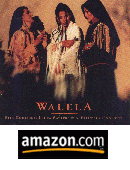
Jim Wilson certainly started something with Music For the Native Americans. Bringing together Rita Coolidge, Priscilla Coolidge and Laura Satterfield as backing vocalists lead to the continuation of the collaboration as a full time group Walela.
Rita Coolidge and her sister are of Cherokee descent and a
little of this has surfaced in Rita Coolidge's previous albums although they have all been
straight rock albums. Here the three women have the chance to indulge fully in their heritage
with a number of songs in both English and Cherokee that work beautifully. The album is
produced by Jim Wilson and much or the feel of the Little Wolf Band comes through in the
arrangements but this is much more a straight vocal album of songs that are in the more
accepted style of Western music. That said, the songs draw heavily on Native American legend
and heritage and touch on subjects such as Wounded Knee. I groaned at the inclusion of the
heavily overdone Amazing Grace but sung in Cherokee it is a totally different song that fully
captures the beauty of the original before it was overexposed by all and sundry.
There are no real stand out tracks here, all being fine songs,
beautifully sung. If you like female voices and harmonies and prefer a more 'rock/pop' style
but still with Native American influence then this is it. A fine album.
Robbie Robertson
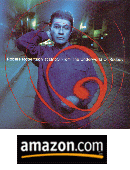
After rediscovering his roots with Music For The Native Americans would Robbie Robertson continue in the same vein or return to his previous style with The Band? Well, a bit of both actually, for this album retains much of the Native American influence whilst being much more of a rock album than the last one.
The opening track is a repetitive traditional chant with the
title spoken at intervals, almost a dance mix come Native American chant come rock with
distorted guitar. Hard to describe really. Later on more conventional songs are included with
The Code of Handsome Lake drawing strongly on Robertson's Mohawk heritage and Peyote Healing
featuring Primeaux and Mike with their haunting church influenced plainsong. Stomp Dance
features The Six Nation's Women Singers and tells why the First Nations continue to dance and
be proud of their Indian country. Great chanting and continuous percussion underpins the
vocals and makes this one of the better tracks.
The stand out track for me is Sacrifice which tells the story
of Leonard Peltier in his own words, in fact it is set to words spoken by Leonard Peltier from
his prison cell. Words that tell the story of his imprisonment spoken without bitterness or
anger but with an acceptance of the sacrifices he has had to make coupled with the conviction
that his fight for freedom continues to be the fight of all Native American people. An
outstanding track that highlights, once again, the continuing disregard of human rights by the
United States government. If one track ever justifies buying an album, this is it.
Overall this is much more of a rock album but it retains much
Native American influence. A mix of influences and styles that does not gel as well as Music
For the Native Americans but is interesting and may appeal more to those who prefer a heavier
rock feel. Having said that there are a couple of quite gentle songs included.
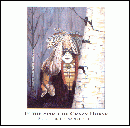
When a number of artists come together to produce a tribute or fund-raising album the result is inevitably rather mixed but the this hangs together rather well in the style of many of the protest folk-rock songs of the sixties.
There are not many 'big name' Native American artists but this
album includes contributions from Joanne Shenandoah and Buffy Sainte-Marie as well as Bruce
Cockburn (not Native American as far as I know) alongside lesser known artists such as Ellen
Klaver, Mitch Walking Elk and Jim Page. One track by City Folk undoubtedly includes Jackson
Browne.
Joanne Shenandoah opens with Please Sign Here which tells how
Native American people have over centuries being tricked and conned into signing away their
lands and rights, a practice that continues to this day either by deception or by outright
criminal practices such as employed by the FBI in taking away Leonard Peltier's freedom.
Several of the songs are directly about Leonard Peltier but many are general songs about
native American issues and two are about Anna Mae Aquash a member of AIM who was murdered by
the FBI in the 1970's. Her body was discovered in a ditch and, after cutting off her hands,
the authorities declared that she had died from exposure. A later autopsy discovered that she
had been shot in the back of the head.
I particularly like the two songs by Jim Page who has a strange
voice (I like strange voices!) and who sings in the troubadour style of early folksingers with
simple guitar accompaniment. His two songs are about Leonard Peltier and Anna Mae Aquash and
are direct story telling songs in the style of Woody Guthrie or early Bob Dylan. One of the
joys of this album is discovering people you have never heard of, that may well turn out to be
favourites.
This is, without doubt, folk music about Native American
issues. There are no direct influences in the music but the words tell many stories of how the
native American people continue to struggle in a society that continues to deny their
rights.
This is not an easy album to find. Amazon do not sell it and I
think I got my copy direct from Four Winds Trading who produced the album. If you want to
order on-line then check out Matoska in our links section as they
have the CD in their online catalogue.
Proceeds from this album go to the Leonard Peltier Defense
Committee. Seek it out and buy it now.
This is, of course, only a small selection of many recordings that must be available. I'll add more as I discover them but your feedback on other albums would be appreciated. Send an e-mail with your discoveries
Return to top of page
|
|